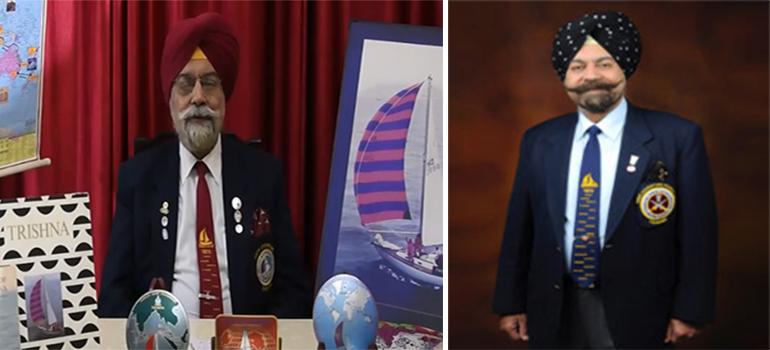
A Daredevil Pothohari
05 April 2021The history of the Pothohar is multilayered. It is a land where many civilizations left their mark. A sailing expedition around the world led by a Pothohari Brigadier TPS Chowdhury, AVSM is a fascinating tale. They were the first team from India to sail around the world covering 54,000km in a yacht. They sailed through all the Oceans, encountered rough seas, storms and cyclones and had many near death experiences. The team comprised of 10 army officers, from the Corps of Engineers.
Preparation took four years. The selection of a yacht was a tedious process as they had limited foreign exchange. Finally TPS Chowdhury and his team chose a 15 year old Swan Class yacht. The boat was from Brighton and originally was called The Guinevere of Sussex. It was 11 metres long and 3.25 metres wide and built in 1970. They repaired the yacht, and decided to sail from the UK back to India. It was renamed as ‘TRISHNA’, which means ‘an urge to fulfill a deep rooted desire, a ‘thirst.’ which represented their thirst for the journey they were about to begin.
The first leg of their journey began in Gosport, UK on 12 October 1984 with a crew of six officers. They arrived back in India after 112 days. Along their journey they had a few interesting moments including being intercepted by pirates in Lisbon and Port Said.
They set sail again from Mumbai on 28 September 1985 and ventured to the Maldives, Mauritius and South Africa in which they experienced stormy weather and almost crashed in to large rocks at the Cape of Good Hope. Trishna touched the Island of Saint Helena in the Atlantic after 33 days of non- stop sailing. This was the longest stretch of non-stop sailing in the entire journey.
The communications cables and antenna were broken in a storm whilst rounding the Cape and the team had lost contact with India. When they called India they were informed that the Indian government had requested the South African Government to launch an Aerial search for Trishna. However their aircraft was not able to find them as the yacht was not visible due to the weather so they were pronounced lost at sea. Much to the joy of their families and the government this was not the case and the crew were safe and sound.
They continued their expedition and reached Panama. Trishna was taken out of the water once they arrived and repaired by the crew members with the help of the Port Authorities. The Barnacles were removed from the hull, and a fresh coat of anti-fouling paint was applied. It took seven days for all the necessary repairs to be done. The crew was then given a break to visit their relatives and friends in the USA.
When the team travelled to Tahiti the locals had never seen Indians let alone Sikhs with Turbans. They wondered if the head of Brig TPS Chowdhury was badly hurt. It was an interesting and new phenomenon to the natives. Brig TPS Chowdhury was an instant hit and his photograph was out in the Newspapers the next day. He even gave a demonstration of how to tie a Turban to the locals.
From Tahiti they arrived in New Zealand and Australia via Bora Bora. Trishna ran into a cyclone mid way in the Tasman Sea. With winds over 140 kmph, and waves over 40 feet high, there was nothing much the brave sailors could do except to hold on. They were caught up and drifted 350 nautical miles off course. The winds dropped and the crew were able to release and sail to Sydney Harbour where they rested and repaired the damages.
On 29 December 1986, they left Colombo on the last leg of their journey to Mumbai. Trishna’s crew members were given a lively welcome at the Gateway of India. Following this Trishna and Brig TPS Chowdhury caught the first rays of sun in the new millennium by sailing to Singapore. Yacht Trishna has now been decommissioned and is archived at the College of Military Engineering in Pune.